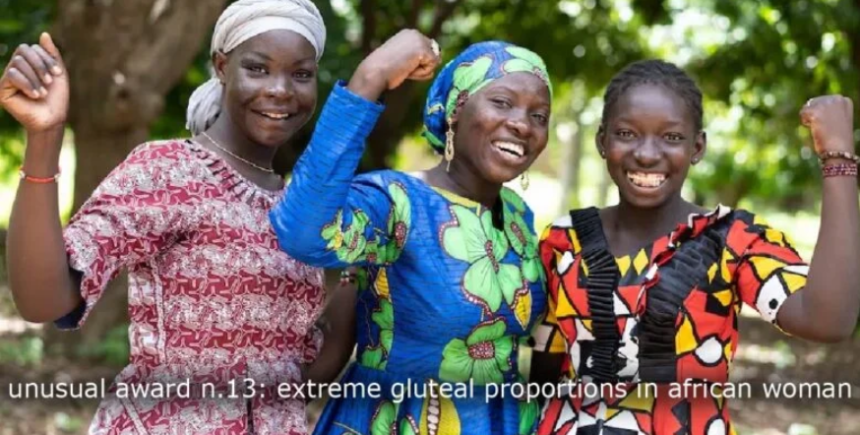Introduction
When it comes to celebrating the unique, awards often honor achievements in arts, sports, science, and even entertainment. But every now and then, we encounter acknowledgments that focus on traits or phenomena so unusual, they make us pause. Unusual Award N.13 is one such fascinating recognition that highlights extreme gluteal proportions in African women.
This award raises thought-provoking questions about body diversity, beauty standards, and cultural context. Why would proportions that defy conventional expectations merit acknowledgment? This blog dives deep into understanding the origins of Unusual Award N.13, its broader significance, and the science behind the celebrated shapes.
By the end of this post, you’ll gain insights into how societal norms intersect with genetic influences and cultural perspectives, making this recognition truly one-of-a-kind.
The Story Behind Unusual Award N.13
What is Unusual Award N.13?
Unusual Award N.13, officially known as the accolade honoring extreme gluteal proportions in African women, brings attention to a unique physical characteristic. Unlike traditional awards that celebrate accomplishments, this one spotlights an anatomical feature that stands out due to its rarity and cultural significance.
While surprising to many, such awards often have roots in historical and cultural celebrations of body diversity. This specific focus draws attention to the naturally augmented gluteal proportions experienced predominantly among women from specific African regions.
Historical and Cultural Context
African cultures have long celebrated curvaceous figures, considering them symbols of fertility, health, and vitality. Societies throughout history have expressed admiration for fuller-bodied women, from art to folklore. What Unusual Award N.13 achieves is formalizing this appreciation into an award format that’s both respectful and intriguing.
Additionally, this recognition underscores the influence of genetic predispositions. Studies suggest that women in African lineages may inherit traits that emphasize fat distribution toward the gluteal region. Such physiology, linked to evolutionary adaptations, has aided survival in specific natural conditions.
The Science of Extreme Gluteal Proportions
Why Do These Proportions Occur?
The phenomenon celebrated by Unusual Award N.13 is often linked to something called steatopygia. This is an evolutionary trait characterized by the accumulation of fat in the buttocks. While this is rare globally, it is more common among certain indigenous African communities, such as the Khoisan people.
Key Contributing Factors
-
Evolutionary Adaptation
Steatopygia is believed to have evolved as a survival mechanism. Fat stored in the gluteal region offered energy reserves during periods of scarcity while helping regulate body temperature in warm climates.
-
Genetics
The genetic variance responsible for this trait is unique and has been passed down through generations, further concentrated within specific populations.
-
Cultural Reinforcement
Cultures that value this feature often see it perpetuated due to societal perceptions of beauty and desirability.
Body Positivity Meets Genetics
Recognition through awards like Unusual Award N.13 intersects with modern body positivity movements, where the dialogue emphasizes celebrating physical uniqueness. By highlighting these proportions, the awards encourage conversations around diversity in beauty while challenging global beauty standards dominated by eurocentric ideals.
Understanding the Broader Implications
Body Diversity Across the Globe
What stands out about Unusual Award N.13 is that it shines a spotlight on features typically overlooked or even stigmatized outside specific cultures. Body diversity spans all races and ethnicities, and each region often has its own standards of beauty. This award reminds us to rethink global perceptions of attractiveness and appreciate the richness of our differences.
Role of Media and Representation
While genetic predispositions explain the celebrated traits, media and representation fuel perceptions and opinions. Western beauty ideals often prioritize slim or conventionally toned physiques. By contrast, Unusual Award N.13 challenges these minimalistic ideals, offering an alternative lens through which to view individuality.
Real-Life Examples and Celebrations
Several African women over time have gained recognition for their unique and remarkable proportions, becoming cultural icons. These women remind us that beauty is not monolithic but rather a spectrum worth appreciating in all its forms.
Inspiring Figures
Traditional depictions in African art often portray voluptuous female figures symbolizing fertility and prosperity.
Contemporary influences see cultural celebrations featuring plus-sized pageants or community acknowledgments focused on celebrating such unique traits.
These public figures represent Unusual Award N.13’s ethos by challenging stereotypes while attaining visibility in a competitive space.
Closing Thoughts
At first glance, Unusual Award N.13 for extreme gluteal proportions in African women might seem eccentric or puzzling. However, a deeper understanding reveals it as an important tribute to bodily uniqueness, cultural importance, and the celebration of diversity.
The award propels conversations around evolving beauty standards and sparks curiosity about the role genetics and the environment play in shaping our bodies. Most importantly, it allows us to recognize and appreciate diversity in shapes, sizes, and appearances, helping to build a world that celebrates difference rather than conformity.
Body positivity transcends mere words when society creates space to honor and uplift marginalized traits and features. Here’s to celebrating individuality, one unusual award at a time.
Key Takeaways
- Unusual Award N.13 highlights the uniqueness of extreme gluteal proportions found predominantly among African women.
- Such proportions are a result of evolutionary adaptations, genetics, and cultural factors.
- The award underscores the importance of challenging eurocentric beauty norms and promoting body positivity.
- It invites a deeper understanding of and appreciation for global diversity in beauty standards.







